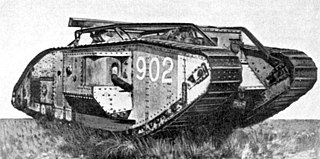 W
WThe development of tanks in World War I was a response to the stalemate that developed on the Western Front. Although vehicles that incorporated the basic principles of the tank had been projected in the decade or so before the War, it was the alarmingly heavy casualties of the start of its trench warfare that stimulated development. Research took place in both Great Britain and France, with Germany only belatedly following the Allies' lead.
 W
WThe United States has produced tanks since their inception in World War One, up until the present day. The U.S. has been greatly influential in the design philosophy, production and doctrine of tanks, and has been responsible for some of the most successful tank designs.
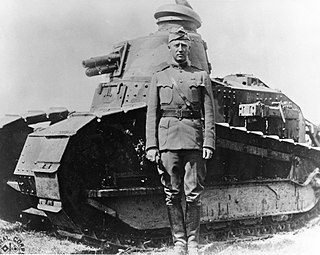 W
W W
WBritish heavy tanks were a series of related armoured fighting vehicles developed by the UK during the First World War.
 W
WBeutepanzer is the German designation for a captured armored fighting vehicle. The Germans used Beutepanzers to gain insight into enemy technology and to augment their own armored forces.
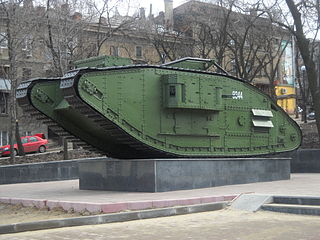 W
WThe "Female" tank was a variation of the British heavy tank deployed during the First World War. It carried multiple machine guns instead of the mix of machine guns and cannons mounted on the "male" tank. Lieutenant-Colonel Ernest Swinton, who played a part in the development of the first British tank and who was co-creator of the term "tank", is credited with inventing these gender-related terms, thinking that the best tank tactics would have the two types operating in concert.
 W
WThe Flying Elephant was a proposed super-heavy tank, planned but never built by the British during World War I.
 W
WThe Holt Gas-Electric Tank was the first prototype tank built in the United States in a collaboration between the Holt Manufacturing Company and the General Electric Company. The tank, built during 1917-1918, was the only one of its kind built, as testing proved it lacked the agility and maneuverability required. The crew number is often given as six, on the assumption there would be two machine gunners, a gunner and loader for the main gun, a driver and a commander.
 W
WThe "Male" tank was a category of tank prevalent in World War I. As opposed to the five machine guns of the female version of the Mark I tank, the male version of the Mark I had a QF 6 pounder 6 cwt Hotchkiss and three machine guns. Ernest Swinton, instrumental in developing the British tank and co-creator of the term "tank", is credited with inventing these gender-related terms, thinking that the best tank tactics would have the two types attacking in consort.Combat Weight Male: 28 tons
 W
WBritish heavy tanks were a series of related armoured fighting vehicles developed by the UK during the First World War.
 W
WThe Medium Mark A Whippet was a British tank of the First World War. It was intended to complement the slower British heavy tanks by using its relative mobility and speed in exploiting any break in the enemy lines.
 W
WThe Medium Mark B was a British tank of the First World War developed as a successor to the Whippet, but ultimately unsatisfactory and production was cancelled at the end of the war.
 W
WThe Medium Mark C Hornet was a British tank developed during the First World War, but produced too late to see any fighting.
 W
WThe Schneider CA 1 was the first French tank, developed during the First World War.
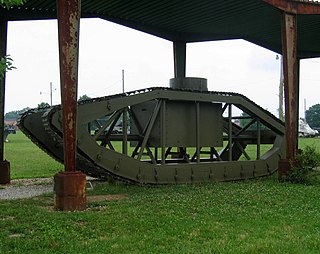 W
WThe Skeleton Tank also known as the Spider Tank was an experimental prototype tank built in 1918 by the Pioneer Tractor Company, Winona, Minnesota for $15,000. The Prototype was ready for trials by October 1918. Designed with several innovative features, some of which were controversial at the time, the Skeleton Tank project did not proceed beyond the single prototype tank.
 W
WThe Saint-Chamond tank was the second French tank to enter service during the First World War, with 400 manufactured from April 1917 to July 1918. Although not a tank by the present-day definition, it is generally accepted and described as such in accounts of early tank development. It takes its name from the commune of Saint-Chamond where its manufacturers Compagnie des forges et aciéries de la marine et d'Homécourt (FAMH) were based. Born of the commercial rivalry existing with the makers of the Schneider CA1 tank, the Saint-Chamond was an underpowered and fundamentally inadequate design. Its principal weakness was its Holt caterpillar tracks. They were much too short in relation to the vehicle's length and weight. Later models attempted to rectify some of the tank's original flaws by installing wider and stronger track shoes, thicker frontal armour and the more effective 75mm Mle 1897 field gun. Altogether 400 Saint-Chamond tanks were built, including 48 unarmed caisson tanks. The Saint-Chamond tanks remained engaged in various actions until October 1918, belatedly becoming more effective since combat had moved out of the trenches and onto open ground. Eventually, the Saint-Chamond tanks were scheduled to be entirely replaced by imported British heavy tanks.
 W
WThe Steam Tank (Tracked) was an early U.S. tank design of 1918 imitating the design of the British Mark IV tank but powered by steam.
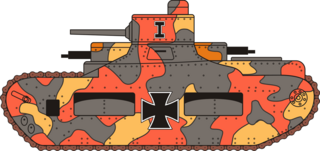 W
WThe Sturmpanzerwagen Oberschlesien was a German tank project of the First World War. It was a radical design for a fast-moving, lightly armoured assault tank.